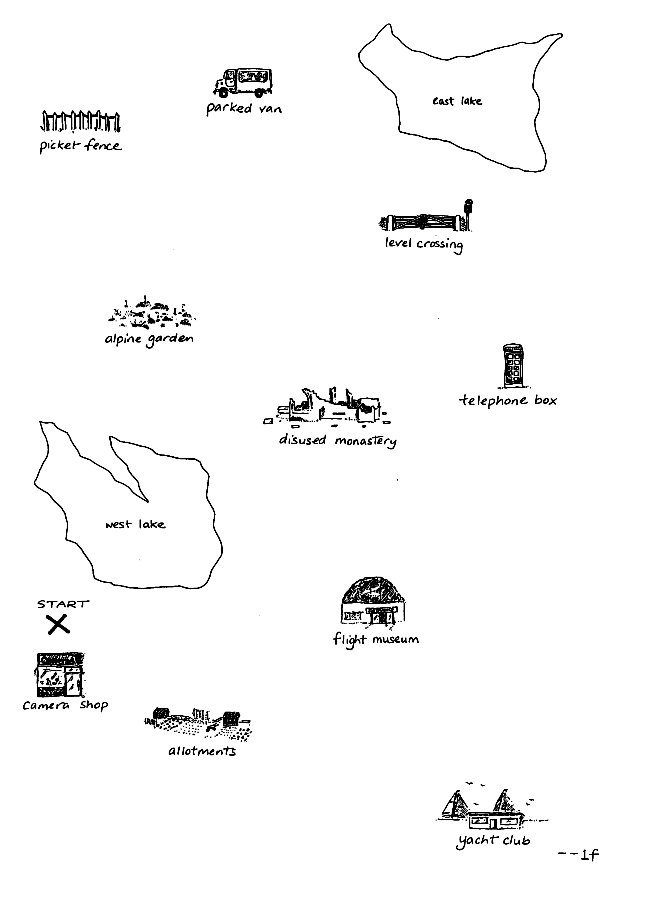Variable rhoticity in Glasgow English: Sociolinguistic factors and abstractions vs. exemplars
Kamil Kaźmierski
Adam Mickiewicz University, Poznań, Poland
ICPhS 2023 Prague :: August 7-11, 2023
kamil.kazmierski@amu.edu.pl
Slides available at: kazmierski-icphs2023.netlify.app
Photo credit: Rajmund Matuszkiewicz
Introduction: Presence of post-vocalic /r/
Scottish English is rhotic, and most or all vowels can occur before tautosyllabic /r/.
—Wells 1982: 407
Introduction: Presence of post-vocalic /r/
Scottish English is rhotic, and most or all vowels can occur before tautosyllabic /r/.
—Wells 1982: 407
Most Scottish speech is firmly rhotic, with /r/ retained in all positions where it occurred historically
—Wells 1982: 410
Introduction: Presence of post-vocalic /r/
Scottish English is rhotic, and most or all vowels can occur before tautosyllabic /r/.
—Wells 1982: 407
Most Scottish speech is firmly rhotic, with /r/ retained in all positions where it occurred historically
—Wells 1982: 410
Scottish English remains rhotic [...], although loss of post-vocalic R is reported in the speech of [working-class] Edinburgh children by Romaine (1978) and in Glaswegian [my emphasis] by Macafee (1983: 32). R-loss is also found in the 1997 data, mainly in the speech of [working-class] children.
—Stuart-Smith 1999: 210
Introduction
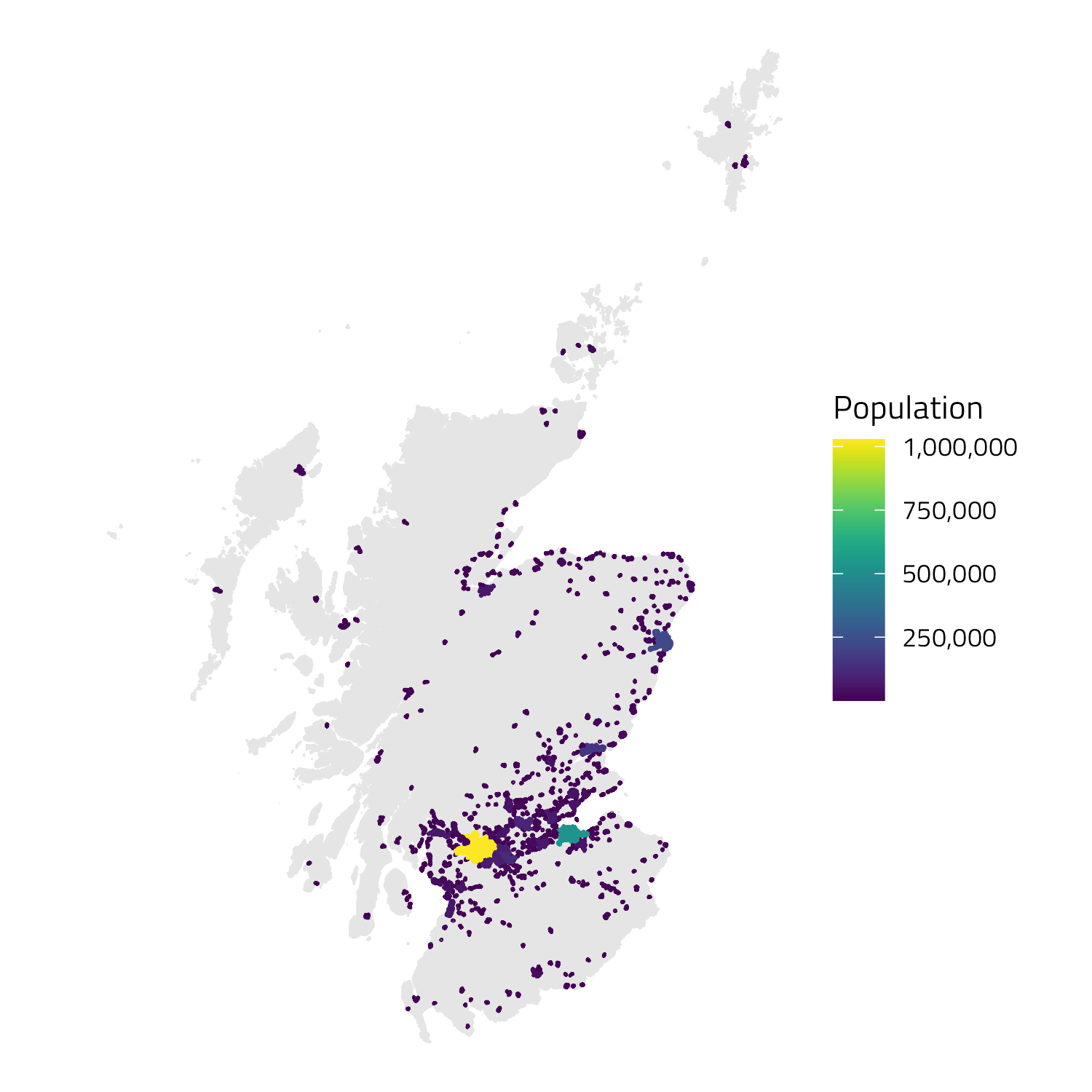
Is rise in non-rhoticity local?
Glasgow
- Working-class
- Change from below
- Independent innovation
- Local
- Sources: Macafee (1983), Stuart-Smith (1999)
Is rise in non-rhoticity local?
Glasgow
- Working-class
- Change from below
- Independent innovation
- Local
- Sources: Macafee (1983), Stuart-Smith (1999)
"Standard Scottish English"
- Middle-class
- Change from above
- Influence of English English
- Supra-local
- Source: Schützler (2010)
Phonological Question
Does the variation in the presence of pre-consonantal /r/ in Glaswegian point to abstractions or phonetically rich exemplars in phonological storage?
Phonological Question
Does the variation in the presence of pre-consonantal /r/ in Glaswegian point to abstractions or phonetically rich exemplars in phonological storage?
Effect of class of vowels
⬇️
Abstractions
Phonological Question
Does the variation in the presence of pre-consonantal /r/ in Glaswegian point to abstractions or phonetically rich exemplars in phonological storage?
Effect of class of vowels
⬇️
Abstractions
Word-specific effects
⬇️
Exemplars
Method
Data: HCRC Map Task Corpus (Anderson et al. 1991)
- Speakers from Glasgow (N = 29)
- Interacting with familiar and unfamiliar participants
- Word-level time-aligned transcriptions (HCRC 2001)
Analysis:
- Corpus querying in Labb-CAT
 (Fromont & Hay 2012)
(Fromont & Hay 2012) - 5,330 word tokens with pre-consonantal /r/ retrieved
- Manual annotation based on audition: vocalized, approximant, tap, or trill
- Mixed-effects Binomial Logistic Regresion Modeling with
lme4(Bates et al. 2015) in R (R Core Team 2022)
- Corpus querying in Labb-CAT
Example #1: Vocalized (male, 17, Glasgow)
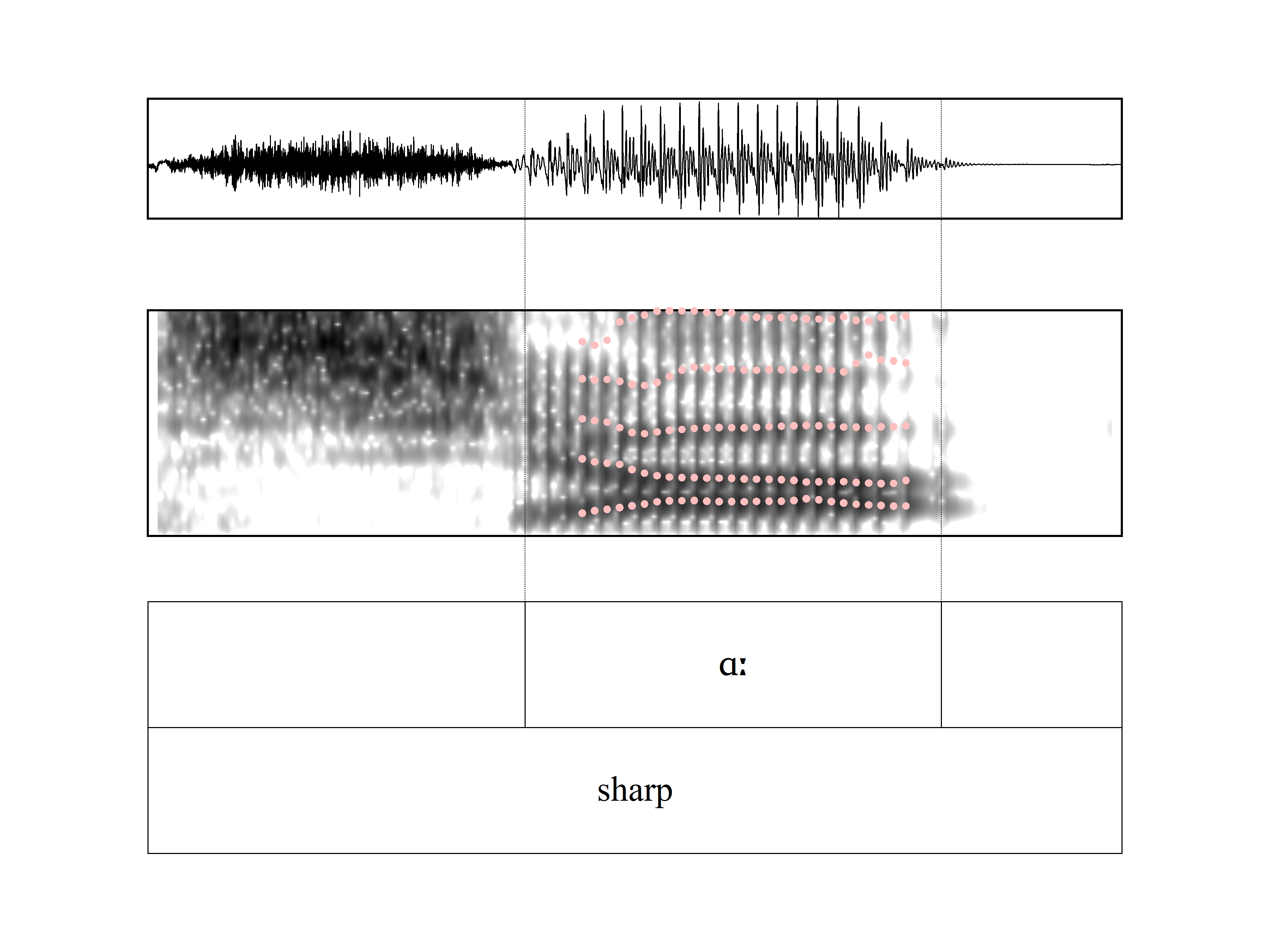
Example #2: Approximant (female, 19, Glasgow)

Example #3: Tap (male, 30, Glasgow)

Example #4: Trill (male, 18, Glasgow)
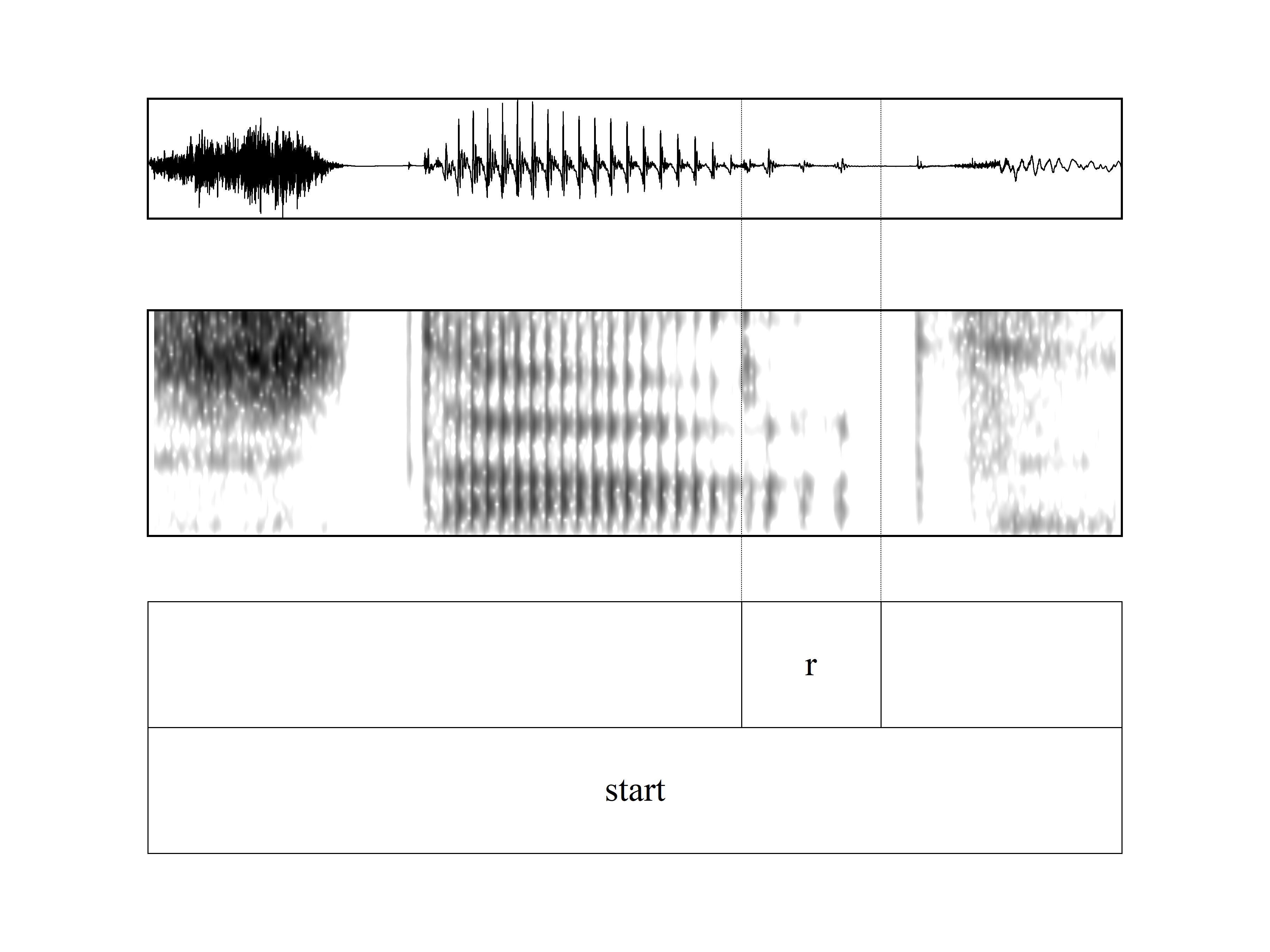
Results
Overall distribution
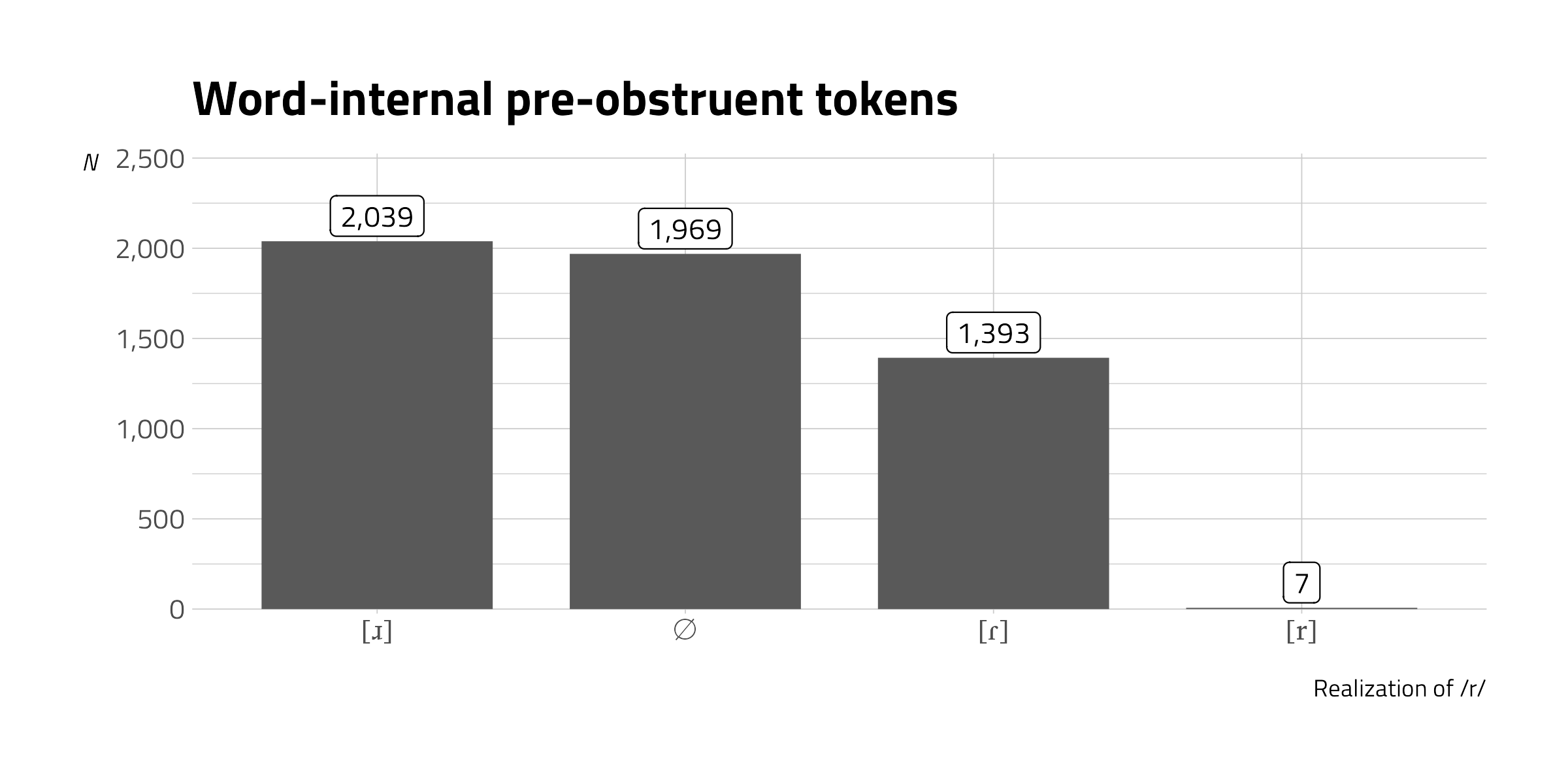
Results by rhoticity (excl. trills)

Individual variation
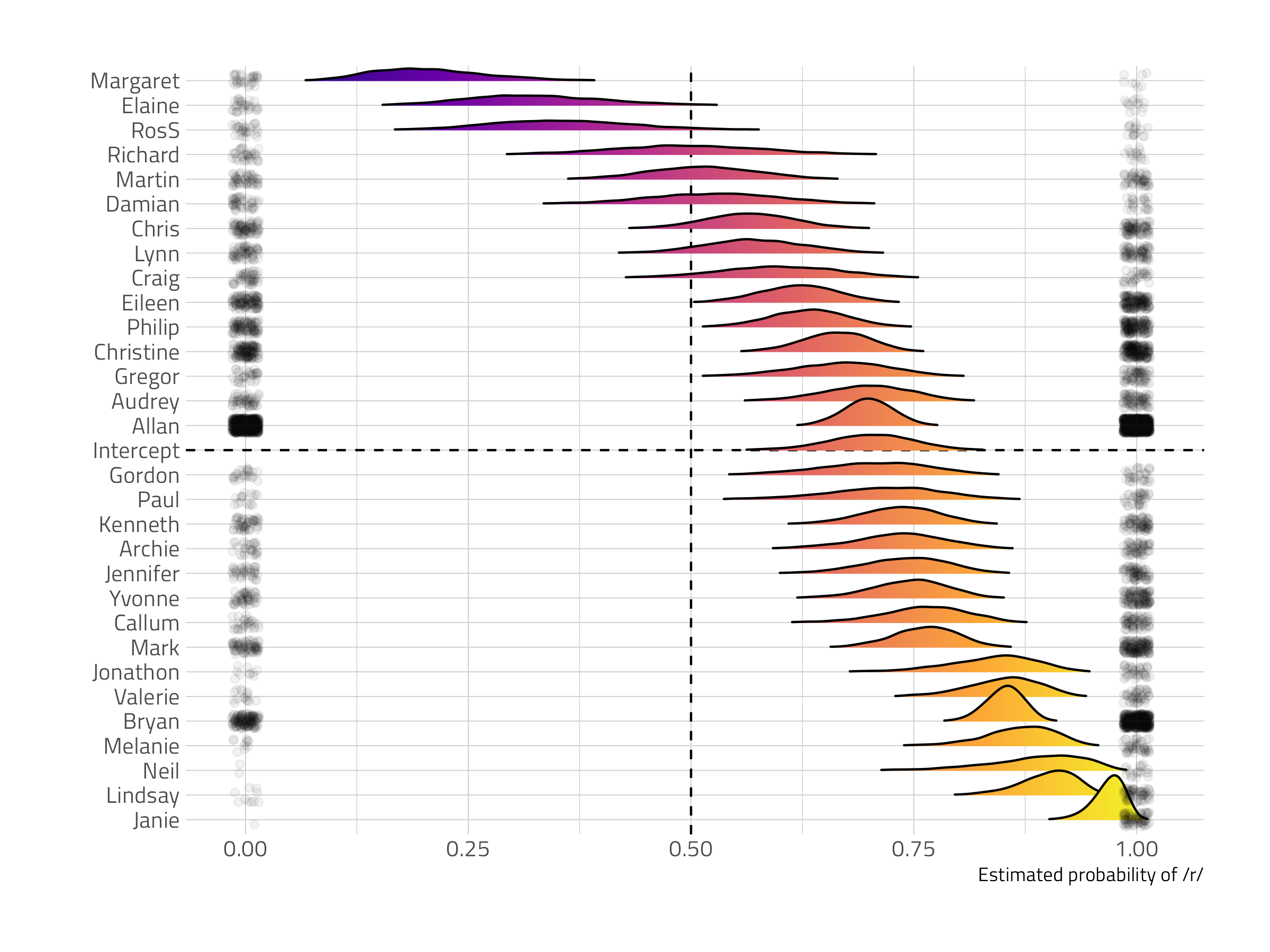
Rhoticity: familiarity by gender (empirical)
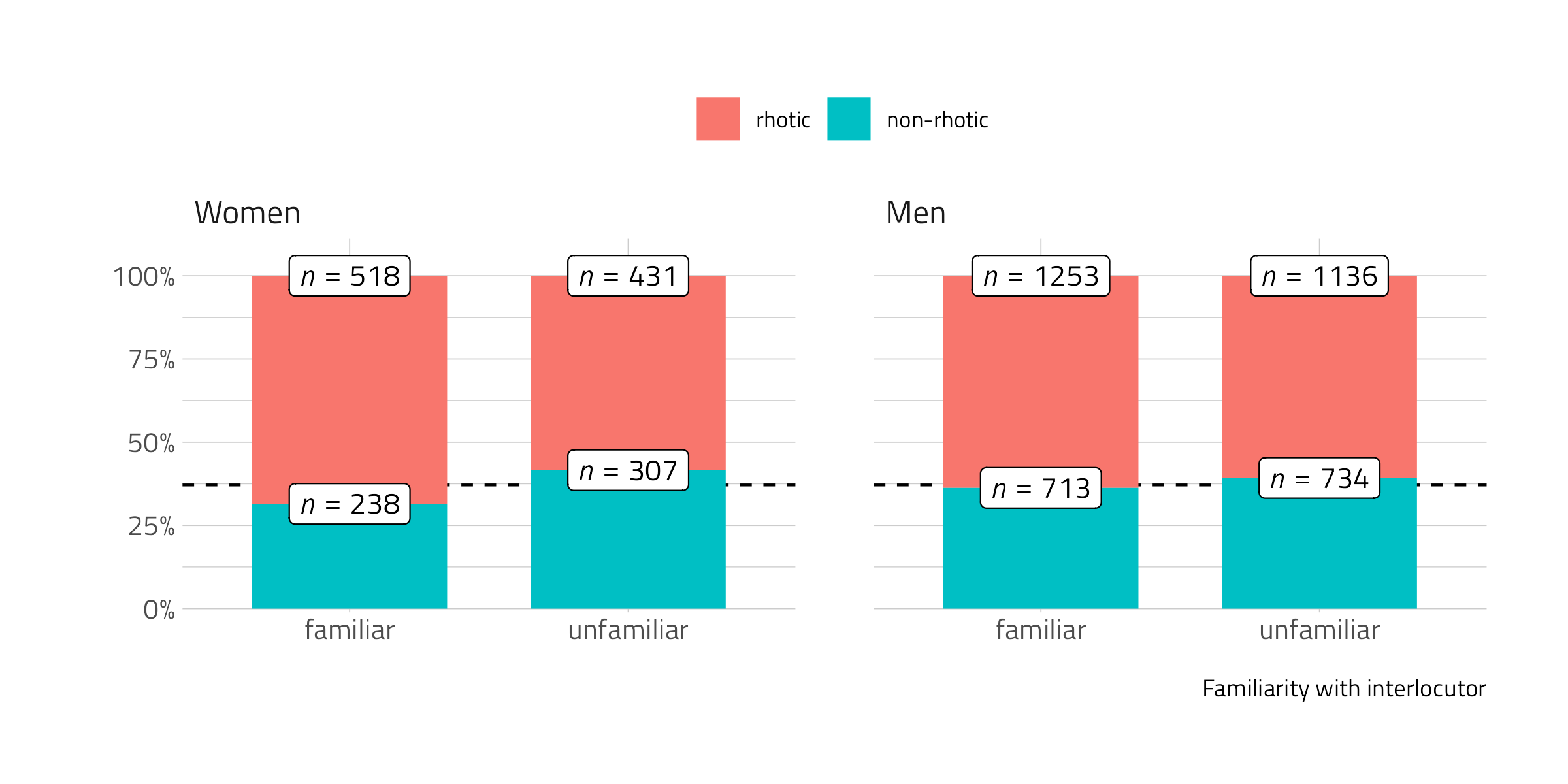
χ2(2)=7.775,p<0.05
Effect of vowel class
- Back vowels favor non-rhoticity (Dickson and Hall-Lew 2017)
- NORTH > FORCE > START > NEAR > SQUARE >> NURSE > lettER: back > front > central
Effect of vowel class
- Back vowels favor non-rhoticity (Dickson and Hall-Lew 2017)
- NORTH > FORCE > START > NEAR > SQUARE >> NURSE > lettER: back > front > central
| vowel | class |
|---|---|
| a | back |
| ɔ | back |
| ʉ | central |
| ɜ | central |
| ə | central |
| e | front |
| ɪ | front |
Effect of vowel class
- Back vowels favor non-rhoticity (Dickson and Hall-Lew 2017)
- NORTH > FORCE > START > NEAR > SQUARE >> NURSE > lettER: back > front > central
| vowel | class |
|---|---|
| a | back |
| ɔ | back |
| ʉ | central |
| ɜ | central |
| ə | central |
| e | front |
| ɪ | front |

χ2(2)=3.5951,p=0.17
Thank you!
- Rhoticity rate: around 70%
- Most common realizations: [ɹ] > [ɾ], almost no [r]
gender:familiarity- non-rhoticity supra-local?- Word-specific effects: support for exemplars ✅
- No effect of vowel class: no support for abstractions ❌
This research was supported by an NCN grant no. 2017/26/D/HS2/00027
kamil.kazmierski@amu.edu.pl
Photo credit: Rajmund Matuszkiewicz
Extras
Margaret, 18, female :: Most non-rhotic speaker
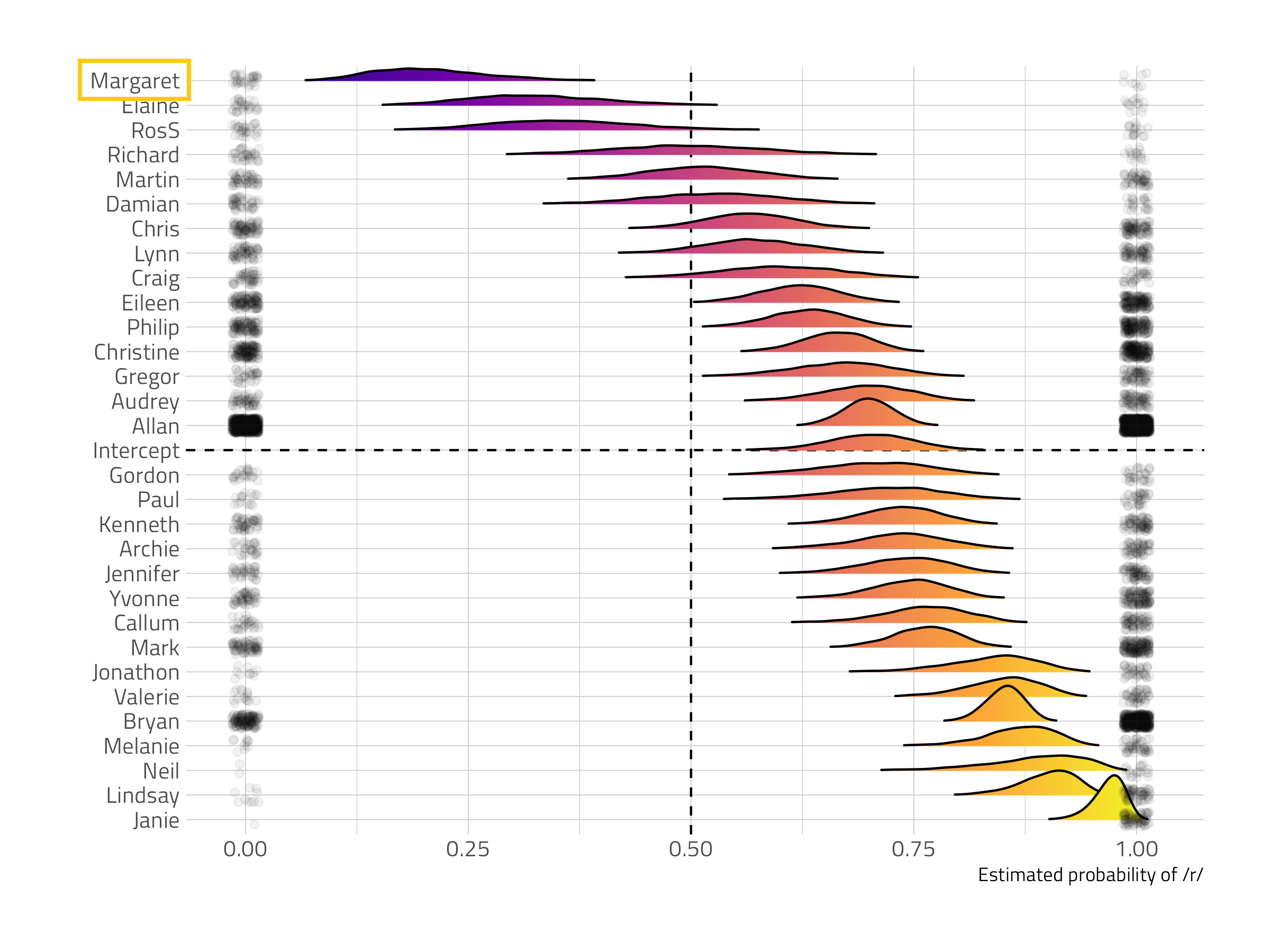
Janie, 18, female :: Most rhotic speaker
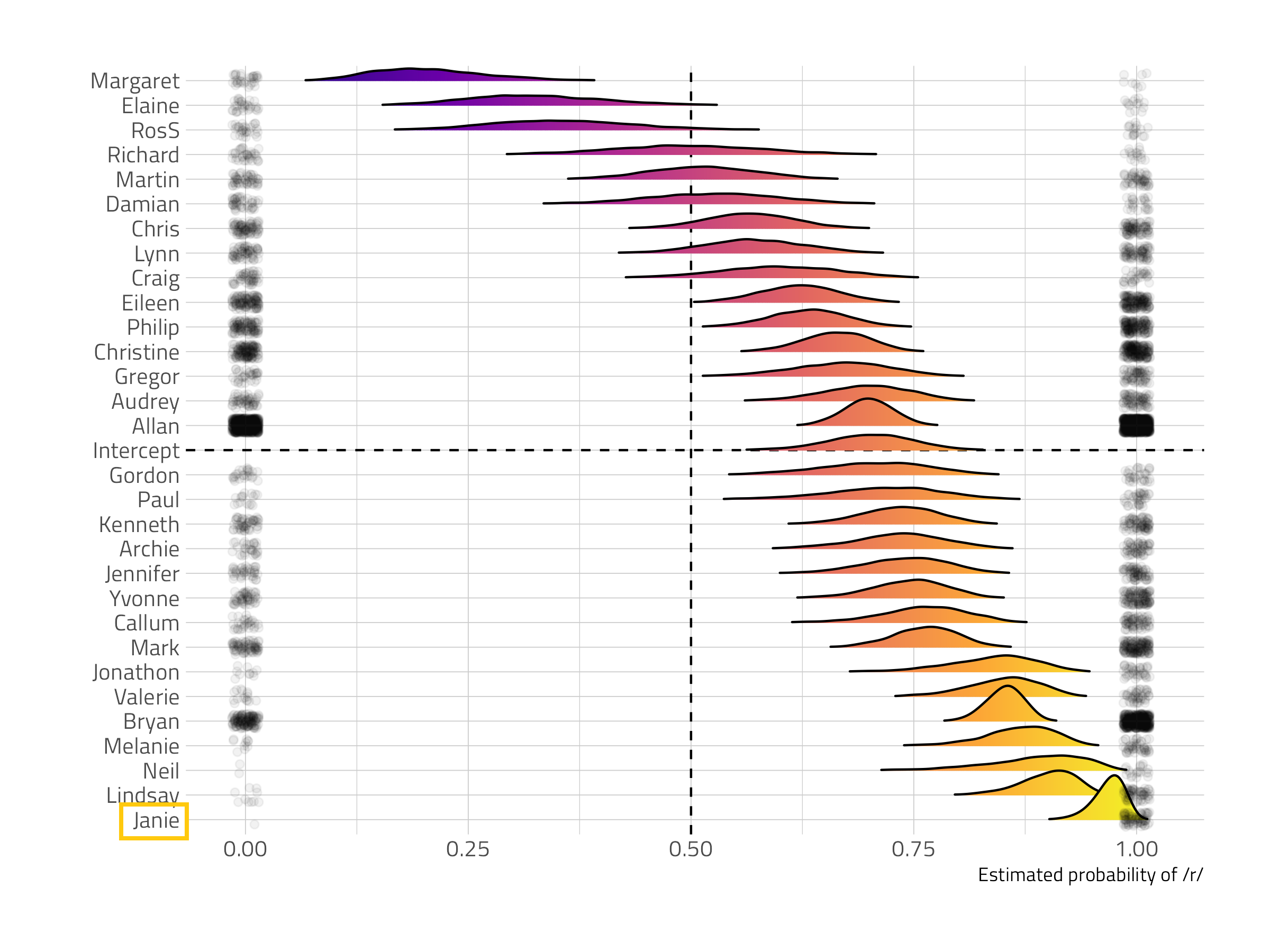
Instruction giver
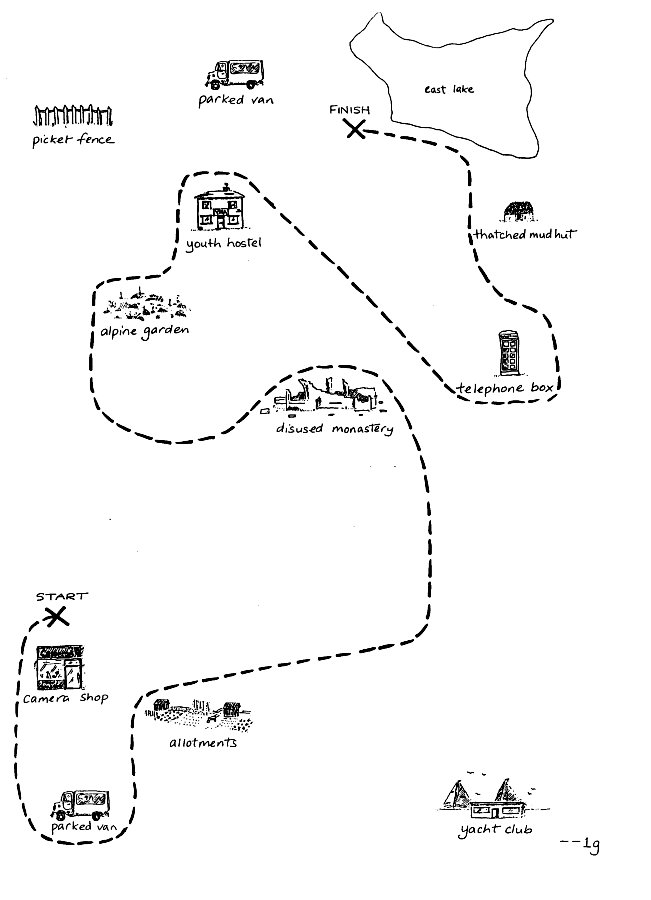
Instruction giver

Instruction follower
